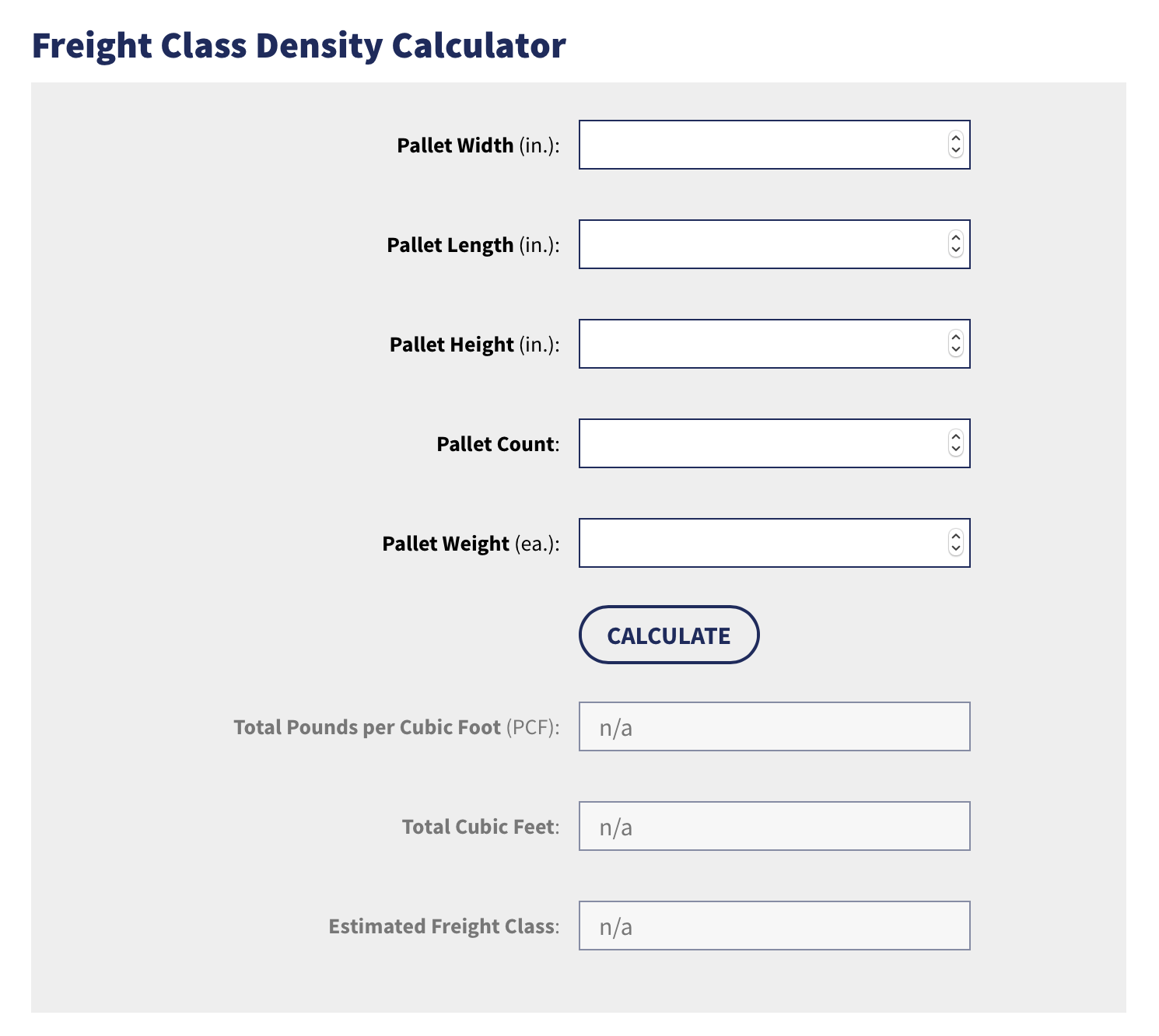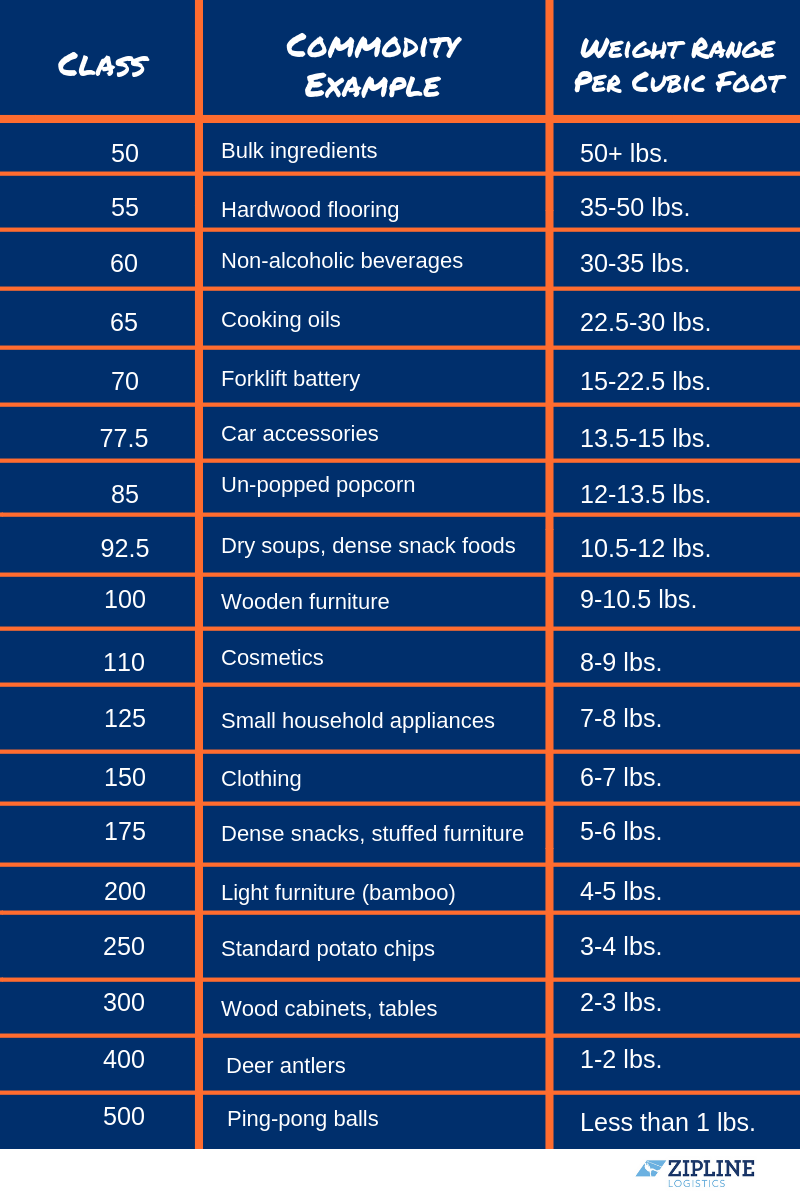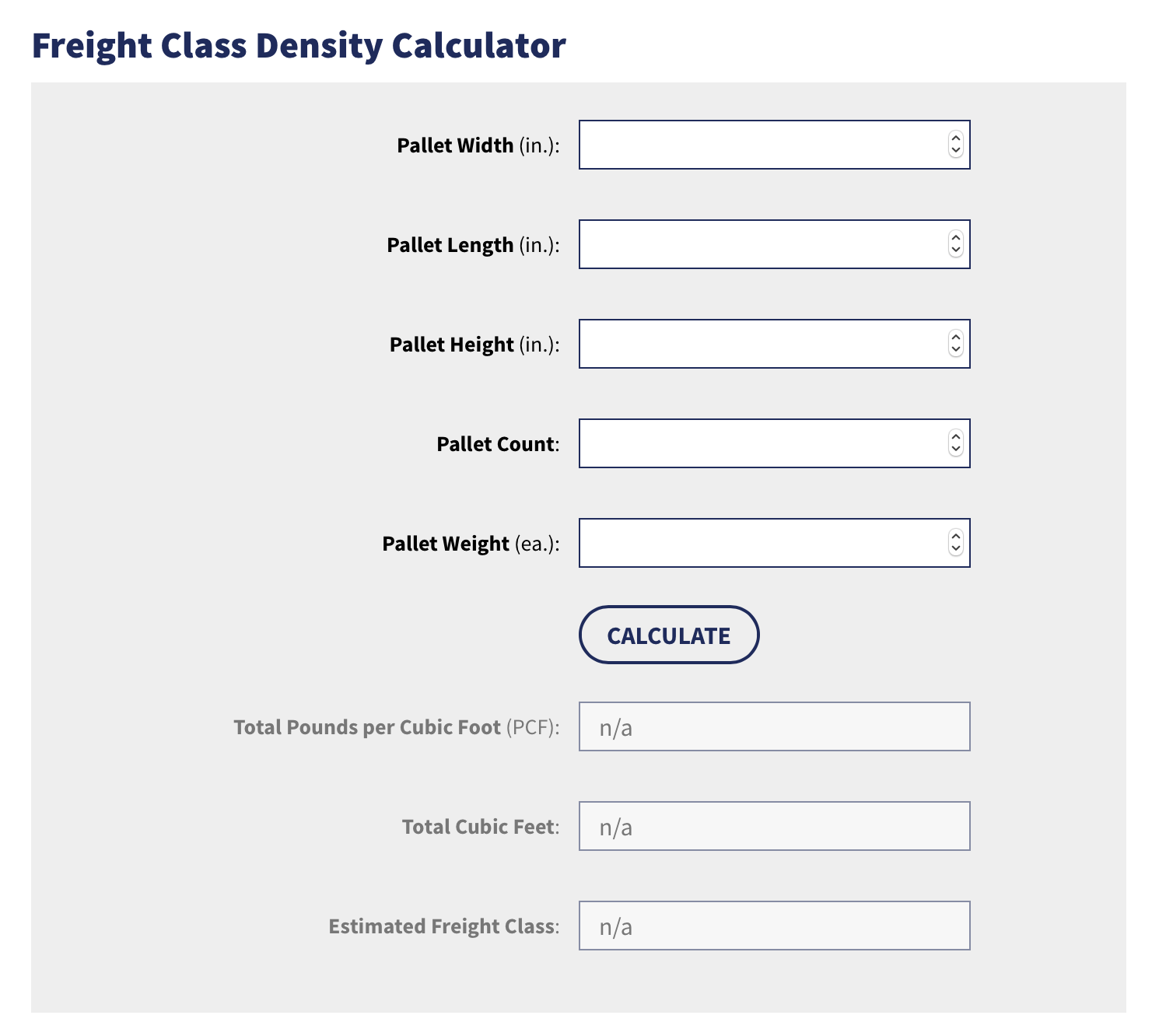What are LTL Freight Classes?
LTL freight classes represent a standardized method of defining price for LTL freight based on the ease of movement. Ranking and classes are defined by the National Motor Freight Traffic Association (NMFTA).
How is the Freight Class of a Shipment Determined?
Each type of freight is evaluated on density, handling, liability, and stowability.
- Density: Pounds per cubic feet. Typically, high density equates to lower freight class, and vice versa.
- Handling: The ease of moving a product between LTL terminals, looking at fragility and packaging. Any freight that requires special handling could be assigned a higher class.
- Liability: Ability to be damaged, ability to damage adjacent freight, perishability. More liability equates to a higher freight class.
- Stowability: Can the freight be stacked or turned to maximize space, or do its dimensions or nature require it to be shipped separately? Pallets that are more difficult to store will be given a higher freight class.
How to Determine LTL and Freight Class?
- Know your commodity type.
- Measure your pallet dimensions and weight.
- Multiply length * width * height to determine total cubic feet.
- Divide the weight of the shipment by the total cubic feet.
 |
Freight Class Calculator
Use Zipline Logistics’ free calculator to determine your LTL freight class |
How do LTL Freight Classification and Density Affect LTL Rates?
The lower your class, typically the lower the price of shipping. For example, an item that is Class 50 typically will be less costly to ship than an item that is Class 500.
 What are NMFC Codes?
What are NMFC Codes?
The National Motor Freight Classification (NMFC) system is a standardized classification method designed to give LTL shippers a uniform pricing structure. Each type of product is assigned a NMFC code, using 18 freight classes between 50 and 500. The codes exist to prevent incorrect classification and keep freight costs as fair and low as possible.
For example, paper has a different NMFC code than snack food so it’s clear to LTL service providers what is required with transport. But codes can often be confusing, with numerous subcategories. Certain commodities, like auto transmissions, have a permanent class regardless of size or weight. This can make accurate coding complicated and leaves room for error. Working with an LTL expert can help remove any ambiguity.
How Do I Find the Freight Class List?
The NMFC database is gated, but by working with a 3PL you can gain access and properly identify what class your product should move under.
Dimensional Rating vs. NMFC Codes
Dimensional rating looks at length, width, height, and weight of product being shipped. It aims to price transportation based on quantifying the space a package occupies. Generally, this method of rating benefits shippers of dense products and works against those who ship lightweight goods.
NMFC rating works to keep costs fair, based on commodity type, not just dimensions.
Both methods are currently used to classify LTL orders, but it is expected that dimensional rating will become more popular with the introduction of new technologies. Dimensional scanners at LTL terminals will make classification faster and less confusing, but adoption is not yet industry-wide due to pricing constraints.
Why Do Some Commodities Have a Fixed Freight Class?
Certain commodities, like auto transmissions, have a permanent class regardless of size or weight. This is due to the unchanging nature of the product, its value, and how it is transported. Items that change with relative frequency (think cell phones) with regards to size, value, density, etc. typically get petitioned to change classification by the NMFTA (National Motor Freight Traffic Association).
Why is LTL Class Important?
Classifying freight provides LTL carriers with important information upfront. Based on class, they can determine if they have the proper equipment, proper capacity, and better provide pricing estimates.
What Happens If Freight Has Incorrect Shipping Class Codes?
Improper classification results in extra steps for all parties involved and should be avoided whenever/however possible.
If the improper code is on a Bill of Lading the LTL carrier will need to reclassify. This service incurs an added fee or accessorial charge. Prices can differ vastly based on improper dimensions and classification.
Or, if misclassified and not recorded, the product could be handled incorrectly and ultimately damaged.
How Do Stack-ability and Turnability Impact LTL Rates?
Stack-ability and turnability of product affect the space occupied in a carrier’s trailer. Therefore, in general, the more space occupied the higher your rate and vice versa.
So, if your freight can be stacked with other shipments, it is easier for carriers to get the maximum utilization from their trailers. Some carriers will even provide discounts for stackable freight or upcharge for non-stackable.
Turnability relates to occupied linear feet. Carriers have maximum weight and space limitations for LTL shipments and will charge additional fees for shipments that exceed their linear foot limits.
For instance, 6 pallets that are not turn-able, at 40Lx60W takes up 20 linear feet (because the trailers aren’t wide enough to fit two 60” W pallets side-by-side). If those same pallets are turn-able, then the linear feet occupied drops down to 15ft.
Tips to Lower Your LTL Freight Shipping Class:
-
- Review your pallet configurations to ensure you’re maximizing pallet space. Each product layer on the pallet should go exactly to the edge without “overhang.”
- Ensure you’re classifying the commodity correctly and displaying the correct NMFC code with the corresponding class. Carriers can charge at the class listed on the BOL or at the actual shipment class, whichever is higher.
- Are you using the best packaging for your product? The more “open space” inside the packaging, the less dense your shipment will be.
Contact Zipline for an LTL Quote Today
The post LTL Freight Classes FAQ and Freight Class Codes Chart appeared first on Zipline Logistics.

